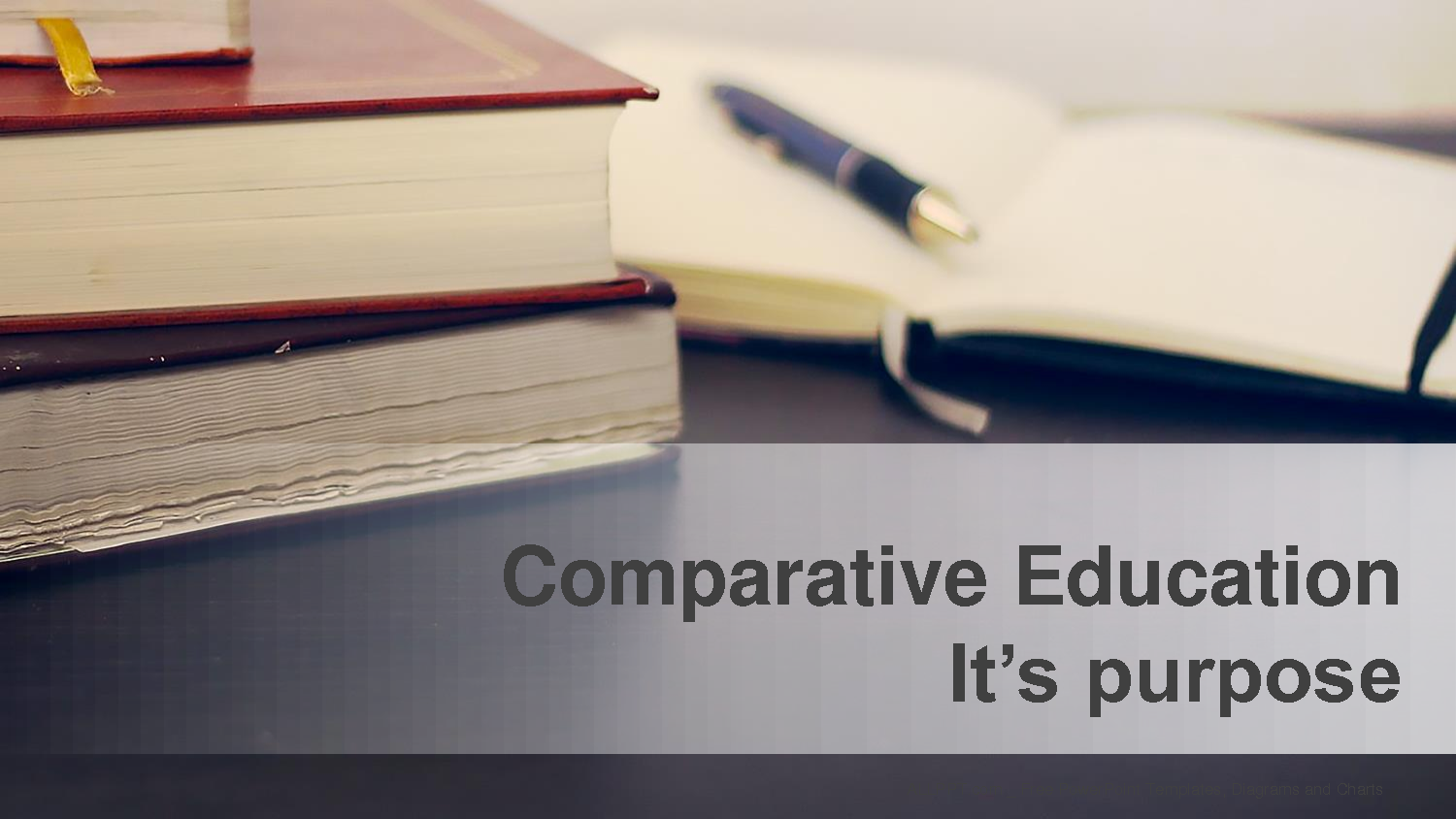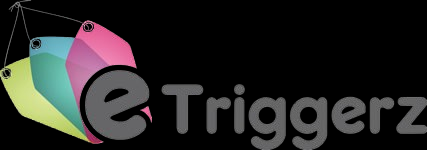EDUCATION
Comparative Education Service | A Guide by the School of Continuing Studies

Navigating education systems across the globe can be challenging, especially if you’re trying to apply for further studies, professional licensing, or employment in a new country. Understanding how your academic credentials compare to standards in another educational system is crucial. This is where a Comparative Education Service (CES) can help.
Whether you’re planning to study abroad, move for work, or immigrate to a new country, utilizing CES is a vital step. This guide will break down everything you need to know about CES, how it works, and why it’s an essential tool for your academic and professional future.
What Is a Comparative Education Service (CES)?
A Comparative Education Service (CES) provides academic credential assessments to determine how your education compares to the standards of another country. It evaluates your credentials—degrees, diplomas, or certificates—and issues a report that outlines the equivalency of your academic achievements.
For instance, if you obtained a bachelor’s degree in engineering from India and want to migrate, work, or study in Canada, a CES can help articulate how your achievements align with Canadian education standards.
Why Is CES Needed?
Here are some of the main reasons you may need a CES assessment:
- University Admissions: Many international universities require a credential evaluation to assess whether your prior education meets their admission standards.
- Employment: Certain employers or industry associations demand education authentication for professional roles.
- Immigration: Immigration processes often involve proving your educational background to meet qualification criteria.
- Professional Licensing: Some professions, like engineering, medicine, and accounting, may require credential assessments for licensing or certification.
How Does CES Work?
Getting your educational credentials evaluated follows an organized process. Here’s a breakdown of how CES typically operates:
1. Submit Your Application
The first step is completing an application form via the CES provider’s platform. Be sure to input accurate information about your academic qualifications and intended purpose for evaluation, such as study, work, or immigration.
2. Provide Required Documents
You’ll need to submit official, certified versions of your educational documents. Most CES services require:
- Transcripts from your university or educational institution sent directly to CES.
- Copies of diplomas, degrees, or certificates.
- A form of government-issued identification for verification.
Remember, document requirements can vary depending on the country of study and the CES provider reviewing your credentials.
3. Evaluation Process
Once your documents are received, CES evaluators will conduct a thorough review of your credentials. They compare your educational achievements with their database of global education systems to determine the equivalency within the destination country’s framework.
4. Receive Your Report
Once completed, you’ll receive an official certificate or report that details the equivalency of your credentials. This report can typically be shared with:
- Universities during admission processes.
- Immigration offices.
- Employers or professional licensing associations.
Advantages of Using CES
Wondering whether a CES credential evaluation is worth the effort? Here are the advantages:
1. Universal Recognition
CES assessments are widely accepted by schools, employers, and regulatory bodies in various countries. They act as an authoritative reference point, saving you from discrepancies caused by differences in educational systems.
2. Clarity for Employers and Institutions
For employers or schools unfamiliar with your home country’s educational system, CES simplifies their understanding of your academic background. It provides clear equivalency ratings that make your credentials easy to assess.
3. Support Immigration Applications
Governments often use CES evaluations as a required element for immigration processes. Submitting an accurate CES report can improve your chances of meeting qualification benchmarks.
4. Unlock Professional Opportunities
For professionals entering regulated careers, such as healthcare, law, or IT, CES helps you obtain the required certifications or licenses faster.
5. Ease of Study Transitions
If you’re transitioning from one education system to another—say from the UK to Canada—CES ensures colleges and universities recognize your prior learning correctly.
How to Choose the Right CES Provider?
Numerous organizations provide comparative education services, and choosing the right one is critical for accurate assessments. Some well-known entities include:
- World Education Services (WES)
- International Qualifications Assessment Service (IQAS)
- International Credential Assessment Service (ICAS)
When selecting a service, consider:
- The region for which you need an evaluation (e.g., Canadian CES providers for Canadian applications).
- The processing time—some organizations complete evaluations faster than others.
- Acceptance policies by institutions, as certain universities or licensing bodies accept only evaluations from specific agencies.
- Cost—you’ll find variations in the fees charged for credential assessments.
Tips for a Smooth CES Process
Here are some tips to ensure your CES evaluation is a hassle-free experience:
- Research Requirements Thoroughly: Check which documents are needed and ensure you gather them in advance.
- Confirm Receiving Institution Guidelines: Know where your CES report will be sent to ensure it meets their standards.
- Contact Your University for Transcripts: Request transcripts early in the process, as delays can often occur.
- Track Your Application: Most CES organizations allow you to track the progress of your evaluation online.
Comparative Education Service and Global Opportunities
People often underestimate how valuable a Comparative Education Service can be. Whether it’s advancing your career, helping you relocate, or supporting your academic goals, having your credentials evaluated is often the first step toward these opportunities.
With globalization connecting diverse education systems, CES has become a crucial tool for individuals seeking to thrive on an international platform. Start planning your CES today, and take a step closer to your next big achievement.
Next Steps with the School of Continuing Studies
The School of Continuing Studies offers a reliable Comparative Education Service designed to meet the needs of students, immigrants, and professionals alike. With fast processing times and trusted evaluations, your academic and professional aspirations can quickly become a reality.
Explore how our experts can guide you seamlessly through the process and begin your CES application today.
[Start Your CES Application Here]
EDUCATION
Unpacking Education Sciences | An Open Access Journal from MDPI

The academic landscape thrives on the sharing of ideas, the questioning of established knowledge, and the exploration of new frontiers. At the heart of this intellectual ecosystem lies education—a field that not only shapes minds but also lays the foundation for innovation and progress. Within this context, Education Sciences, an open access journal from MDPI, has emerged as a critical resource for scholars, educators, and practitioners.
But what makes Education Sciences stand out in an ocean of academic publications? This article will walk you through the journal’s purpose, the topics it covers, and why it’s an invaluable tool for those invested in improving educational practices worldwide. Whether you’re an education researcher, a teacher, or simply someone committed to learning, read on to explore how this open access journal plays a pivotal role in advancing the field.
What Is Education Sciences?
Education Sciences is an international, peer-reviewed, scientific open access journal published by MDPI. It provides a dedicated platform for researchers to publish cutting-edge studies across a broad spectrum of educational topics. Adopting an open access model, it effectively breaks down paywalls, ensuring that knowledge is freely available to anyone with an internet connection—a critical step in making academic resources more democratic and inclusive.
This journal covers original research, review articles, theoretical papers, and even case studies, making it versatile and comprehensive in its scope. Since its inception, Education Sciences has been a trusted source of insights into emerging trends, methodologies, and challenges in education.
The Benefits of Open Access for Education Research
Open access journals prioritize accessibility, and in a field like education, where sharing knowledge is critical, this is a game-changer. Traditionally, academia has been criticized for its reliance on subscription-based access, which limits who can engage with new ideas. Open access publications like Education Sciences transcend these barriers, offering numerous benefits:
1. Global Reach
One major strength of open access journals is their ability to reach a global audience. Educators and researchers from low-income countries often lack access to expensive subscription journals. By providing unrestricted access, Education Sciences empowers educators worldwide to apply evidence-based practices.
2. Faster Knowledge Dissemination
The open access approach reduces delays in publishing and access, ensuring innovative practices and breakthroughs reach practitioners faster. Teachers implementing effective methodologies in classrooms or policymakers deciding on curriculum reforms can immediately benefit.
3. Fostering Collaboration
Free content sparks collaboration across borders. Researchers studying similar problems in different countries can build on each other’s work, broadening perspectives and sharing solutions.
Key Topics Explored in Education Sciences
The journal addresses both foundational and contemporary issues in education. Below are some of the key topics covered:
1. Innovative Teaching Methods
With the rapid evolution of technology, teaching methodologies are transforming. Articles in Education Sciences explore the impact of tools such as gamification, virtual reality, and AI-driven personalized learning. How do these innovations reshape traditional classrooms? And are the results measurable in terms of student engagement and success?
2. Policy and Leadership in Education
Educational leadership is the backbone of successful institutions. From examining the role of school principals to discussing policies affecting education equity, Education Sciences provides a comprehensive look at how systemic issues impact learning outcomes.
3. Equity and Inclusion in Education
Socioeconomic disparities, cultural biases, and systemic inequities create significant barriers in education systems worldwide. Research in this journal dives into strategies for inclusive learning, focusing on ways to eliminate disparities and create opportunities for all.
4. Assessment and Evaluation
What makes an effective assessment? How can educators better measure learning, beyond standardized tests? Articles in this area explore innovative approaches to evaluations, including formative assessments and diverse means of measuring student growth.
5. Interdisciplinary Research
With articles combining insights from sociology, psychology, and tech development, the journal emphasizes the multidisciplinary nature of education. For instance, how does cognitive psychology inform more effective teaching strategies for complex subjects? Or what role does social-emotional learning play in the success of STEM fields?
Why Education Sciences is Crucial for Practitioners and Researchers
By now, you might be wondering, “Why this journal over the dozens of others out there?” Here’s what sets Education Sciences apart as a go-to resource:
1. Transparent and Rigorous Peer Review
Every article published undergoes robust peer review to ensure the quality, relevance, and reliability of the research. This transparency boosts trust among its readership.
2. Wide Range of Contributions
The journal encourages diversity by welcoming contributions from education researchers, educators, and policymakers. The variety of content ensures that readers gain insights that are both theoretical and practical.
3. Ethical and Sustainable Publishing Practices
Backed by MDPI’s zero-tolerance policy against unethical practices, Education Sciences exemplifies integrity in academic publishing. This commitment is especially significant in today’s era of misinformation.
Examples of Impactful Research
Some recent research topics featured in the journal include:
- The role of augmented reality in improving STEM education.
- Effective strategies for dealing with learning loss due to pandemics.
- Actionable insights into bilingual education and its cognitive benefits.
These diverse studies provide actionable frameworks that educators can implement directly while also contributing to larger academic discussions.
How to Access Education Sciences
Conveniently accessible online, subscribing to Education Sciences isn’t necessary thanks to its open access model. Each article can be downloaded as PDF files at no cost, making it simple to save and share important research.
If you’re a researcher, the journal equally welcomes submissions. Guidelines are clear and transparent, ensuring an efficient, fair publication process. Whether you’re contributing your own work or seeking innovative ideas, Education Sciences is your reliable partner in fostering educational excellence.
Takeaways for Educators, Policymakers, and Researchers Alike
Education Sciences serves as a bridge, connecting cutting-edge academic research with the day-to-day realities of educators and policymakers. Its open access model ensures global availability of insights that spark innovation, inform policy decisions, and allow professionals to improve the quality of education on a systemic level.
If you’re part of the educational ecosystem—for example, as a teacher refining your craft, a policymaker advocating for systemic change, or a researcher passionate about your field—bookmarking and engaging with Education Sciences could be your next step toward professional growth.
EDUCATION
University of Oxford : Rankings, Fees & Courses Details

The University of Oxford stands as one of the most prestigious institutions in the world. With its rich history and commitment to academic excellence, it draws students from every corner of the globe. Imagine walking through centuries-old halls where some of the brightest minds have studied and shaped our understanding of various fields. From Nobel laureates to influential leaders, Oxford has been a breeding ground for innovation and critical thinking.
As you explore your options for higher education, considering studying at Oxford can be an exciting prospect. The university’s reputation is unmatched, but what does it offer beyond prestige? Let’s delve into what makes this institution so remarkable—its rankings, courses, fees, student life—and how these elements contribute to shaping future leaders and thinkers.
Prestige and Academic Excellence
The University of Oxford stands as a beacon of academic excellence. Founded in the 12th century, it boasts centuries of tradition and knowledge.
Its rigorous academic environment attracts some of the brightest minds globally. Students engage in challenging discussions that stimulate critical thinking and innovation.
Oxford consistently ranks among the top universities worldwide. It is renowned for its research contributions across various fields, from humanities to sciences.
The university’s tutorial system sets it apart. This unique approach fosters personalized learning, enabling students to delve deep into their subjects with expert guidance.
Additionally, prestigious alumni have shaped history—politicians, Nobel laureates, and influential thinkers bear testament to its legacy.
Studying at Oxford isn’t just about gaining a degree; it’s an opportunity to be part of an esteemed community dedicated to pushing boundaries and inspiring change.
Admissions Process and Requirements
The admissions process at the University of Oxford is known for its rigorous standards and competitive edge. Prospective students need to demonstrate exceptional academic abilities and a passion for their chosen field.
Applicants must submit an online application form, along with personal statements that reflect their interests and aspirations. Strong letters of recommendation can also make a significant impact.
Standardized tests may be required, depending on the program. For instance, many undergraduate courses necessitate specific qualifications like A-levels or equivalent exams.
Interviews play a crucial role in Oxford’s selection process. Candidates are often invited to participate in interviews designed to assess their analytical skills and depth of knowledge in relevant subjects.
It’s essential for applicants to familiarize themselves with deadlines, as they vary by course. Thorough preparation can set candidates apart in this esteemed institution’s selection journey.
Tuition Fees and Financial Aid Options
Tuition fees at the University of Oxford vary depending on the course and student nationality. For UK students, undergraduate courses typically range from £9,250 per year. International students may face higher fees, usually starting around £27,000 annually for arts programs and significantly more for science or medical studies.
Financial aid options are robust. The university offers scholarships based on merit and need. These can significantly ease the financial burden. Additionally, various external organizations provide grants aimed at supporting specific demographics or academic pursuits.
Students can also explore part-time work opportunities within or outside campus to help cover living expenses. Many colleges have funds available specifically designed to assist students in times of financial hardship.
Understanding all these avenues is crucial for prospective learners aiming to make their education experience as financially manageable as possible while pursuing excellence at this prestigious institution.
Overview of Courses Offered at Oxford
The University of Oxford offers a diverse range of courses across various disciplines. Students can choose from humanities, sciences, social sciences, and professional programs.
Each program is designed to foster critical thinking and independent research skills. This environment encourages students to explore their interests deeply.
Oxford also features unique tutorial systems. These small group sessions allow for personalized learning experiences with expert faculty members.
Postgraduate options are abundant too, spanning master’s degrees and doctoral studies in numerous fields.
Additionally, interdisciplinary programs promote collaboration among departments. This approach prepares graduates for complex real-world challenges.
With such a rich academic tapestry, every student at Oxford finds something that resonates with their aspirations and career goals. The course offerings reflect the university’s commitment to innovation while honoring tradition.
Student Life at Oxford
Student life at the University of Oxford is a vibrant blend of tradition and innovation. Each college offers a unique atmosphere, fostering a sense of belonging among students from diverse backgrounds.
From bustling study halls to quiet gardens, each corner provides opportunities for relaxation or focus. Social events are plentiful, ranging from formal dinners to casual gatherings in local pubs.
The city itself pulses with energy. Students can explore historical landmarks or indulge in art exhibitions and concerts throughout the year.
Clubs and societies cater to every interest imaginable—from sports teams to literary circles—ensuring that there’s always something happening outside the classroom.
Support networks thrive within colleges, allowing students to seek advice or share experiences easily. Friendships forged here often last a lifetime, creating bonds that extend far beyond university years.
Opportunities for Global Networking and Career Advancement
The University of Oxford opens doors to a world of networking opportunities. With its diverse student body and global alumni network, connections flourish beyond borders.
Students engage with peers from various cultural backgrounds, enriching their perspectives. This multicultural environment fosters collaborative projects that often lead to innovative ideas.
Oxford also hosts numerous events where industry leaders share insights. Workshops, seminars, and guest lectures provide direct access to influential figures in multiple fields.
Moreover, the university’s career services offer tailored support for students seeking internships or job placements worldwide. These resources help bridge the gap between academic life and professional success.
Many graduates find themselves part of an extensive alumni community that actively supports one another in their careers. The relationships formed during this transformative experience can last a lifetime, providing both personal and professional growth opportunities.
Conclusion
The University of Oxford stands as a beacon of academic excellence and cultural heritage. Its prestigious reputation attracts students from all over the world, eager to be part of its rich history and vibrant community.
Navigating the admissions process can feel daunting, but with clear requirements and guidelines, aspiring students have a structured path to follow. The investment in education here is significant; however, options for financial aid make it accessible for many talented individuals.
Oxford’s extensive range of courses caters to diverse interests. Whether you’re drawn to sciences or humanities, there’s something for everyone. The blend of rigorous academics and engaging extracurricular activities enriches student life.
Networking opportunities abound at this historic institution. Collaborations with global leaders in various fields pave the way for career advancements that are hard to match elsewhere.
Choosing the right university can shape your future in profound ways. With its unique blend of tradition and innovation, studying at Oxford opens doors that last a lifetime.
EDUCATION
Education Explained: Definition, History, Types & Key Facts

Education lies at the heart of individual growth and societal evolution. From founding civilizations to modern-day advancements, it has paved the way for progress, opening doors to knowledge, opportunities, and innovation. But what exactly is education? How has it evolved over centuries? And what forms does it take in our world today?
In this blog post, we’ll explore the foundation of education, its historical development, the diverse types of education that exist, and engaging facts about its global impact. Whether you’re a lifelong learner, an educator, or someone passionate about understanding how knowledge is distributed, this guide will provide valuable insights.
What is Education?
At its core, education is the process by which individuals acquire knowledge, skills, values, morals, beliefs, and habits. It’s a lifelong activity—starting in infancy with basic life lessons and continuing into adulthood with specialized learning in various disciplines.
Education can be formal (like attending school), informal (learning through life experiences), or non-formal (structured learning outside traditional platforms). The ultimate goal of education is to equip learners with tools to think critically, solve problems, and contribute positively to society.
Key components of education include:
- Subjects or disciplines: The areas being taught, such as science, history, or literature.
- Delivery methods: Includes teaching, hands-on experience, online tools, and more.
- Institutional Support: Schools, universities, or community-led programs that shape and disseminate knowledge.
Education forms the bedrock of personal and societal growth, influencing careers, relationships, and civic life.
The History of Education
Understanding the evolution of education offers perspective on its current systems. Let’s take a brief historical tour:
1. Ancient Education
Education in early civilizations was rooted in survival and culture. Around 3000 BCE, in ancient Egypt and Mesopotamia, education focused on writing, arithmetic, and astronomy to meet practical needs like record-keeping, trade, and agriculture. Oral traditions were strong, with elders passing down wisdom.
The first structured schooling systems emerged in places like ancient Greece, where philosophers such as Plato emphasized reason, ethics, and self-discovery.
2. Middle Ages
During medieval times, education was heavily influenced by religious institutions. Monasteries and religious schools focused on teaching scripture, while universities began taking shape in Europe in the 12th century. Subjects like theology, law, and medicine became academic pursuits.
3. The Enlightenment and Modern Education
The Enlightenment (17th-18th centuries) shifted focus toward logic, science, and individualized learning. Thinkers like John Locke and Jean-Jacques Rousseau promoted ideas that education should nurture reason and individuality, not just rote traditions.
By the 19th and 20th centuries, many countries introduced universal access to primary education. Systems became standardized, and secondary and higher education expanded, making formal education accessible to the masses.
Today, technological innovations and globalization have transformed education into a more flexible, personalized, and borderless activity.
Types of Education
Education serves different purposes and takes various forms suited to those objectives. Here are the main types:
1. Formal Education
Formal education refers to structured programs delivered in schools, colleges, and universities. It follows a specific curriculum and often results in certificates or degrees.
- Key Characteristics:
- Teacher-led instruction in controlled environments.
- Hierarchical system with primary, secondary, and tertiary levels.
- Focus on academic subjects like math, science, language arts, and history.
Examples include primary schooling, a degree program at a university, or vocational training.
2. Informal Education
Informal education occurs outside of structured settings. It encompasses the knowledge gained through life experiences, family teachings, social interaction, or exposure to media.
- Key Characteristics:
- No set curriculum or schedule.
- More spontaneous and voluntary.
- Aims to develop life skills and cultural understanding.
Examples include learning a language from family members, developing carpentry skills through community mentorship, or understanding nutrition through reading blogs or watching YouTube videos.
3. Non-Formal Education
Non-formal education blends the features of formal and informal systems. It’s organized but doesn’t necessarily lead to formal certifications. This type is often used for community development.
- Key Characteristics:
- Structured learning with clear objectives.
- Often focused on practical skills or personal development.
- Flexible in approach and schedule.
Examples include attending workshops, adult literacy programs, online courses, or yoga classes.
The Benefits of Education
Education plays a vital role in shaping individuals and societies. Here’s how:
- Economic Mobility
Education provides the skills required for jobs and entrepreneurship. It bridges the wealth gap by enabling individuals to earn a better livelihood, resulting in enhanced economic equality.
- Social Progress
Educated citizens are more likely to advocate for human rights, gender equality, and environmental conservation. Public literacy empowers communities to make informed decisions.
- Personal Growth
Beyond technical knowledge, education fosters creativity, emotional intelligence, and self-confidence. It allows individuals to achieve their full potential.
- Global Impact
On a worldwide scale, education contributes to innovation (think Space-X or AI), collaboration across countries, and reduced poverty rates.
Surprising Facts About Education
- Ethiopia Long Before Modern Schools
The first known university, called Nalanda, was founded in India in the 5th century and became a hub for Buddhist learning.
- Global Literacy Rates
Over 770 million adults worldwide are still illiterate, with women representing over two-thirds of that population.
- Highest Education Levels
Finland consistently tops global education rankings for its progressive approach, short school days, and emphasis on teacher well-being.
- Learning Languages
Being bilingual enhances cognitive development. Early childhood education that incorporates another language often leads to higher academic performance across the board.
- Online Revolution
Over 200 million students use platforms like Coursera, Duolingo, and Khan Academy to engage in online learning today.
Building a Brighter Future through Education
Education continues to be the most powerful weapon to combat inequality and unlock potential. Both traditional and modern methods—from school classrooms to online learning—are essential in shaping the future workforce.
Organizations, governments, and individuals must prioritize fair access to education to help society thrive collectively. Whether you’re a student, parent, employer, or policymaker, investing in learning today safeguards a prosperous future.
Meta Data
Meta Title
Education Explored | Definition, History, and Types
Meta Description
What is education? Explore its history, types, and impact on society. From ancient learning to modern online classrooms, uncover everything about the power of education.
-

 BUSINESS8 months ago
BUSINESS8 months agoQuest for Success with QuestHRSC
-

 BUSINESS11 months ago
BUSINESS11 months agoJack Vonarb Private Equity Revolutionizing the Industry
-

 TRADING11 months ago
TRADING11 months agoThe Ultimate Guide to Mastering grossoptions.com
-

 HEALTH4 months ago
HEALTH4 months agoThe Future of Payments in the Medical Industry: Trends and Innovations
-

 GAME11 months ago
GAME11 months agoIncestflox and the Gaming Community’s Divide
-

 NEWS6 months ago
NEWS6 months agoIs Technology Redefining the Experience at nothing2hide.net news?
-

 HEALTH2 months ago
HEALTH2 months agoAna Bolick SLP Hickory: Leading Pediatric Speech Therapy in North Carolina
-

 BLOG11 months ago
BLOG11 months agoExploring the Concept of 200/6: What You Need to Know
